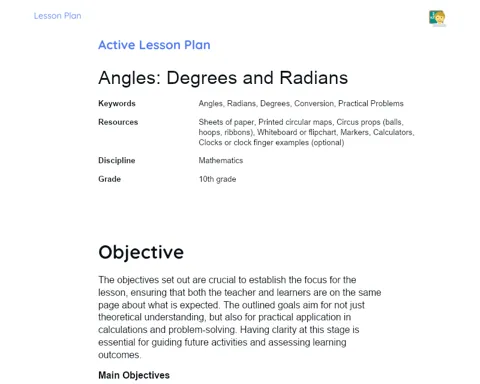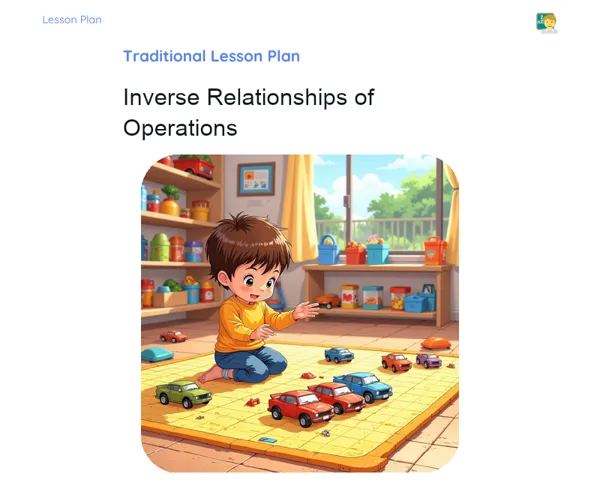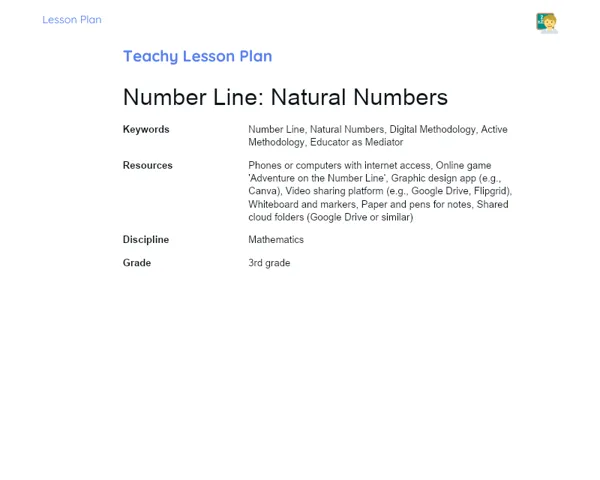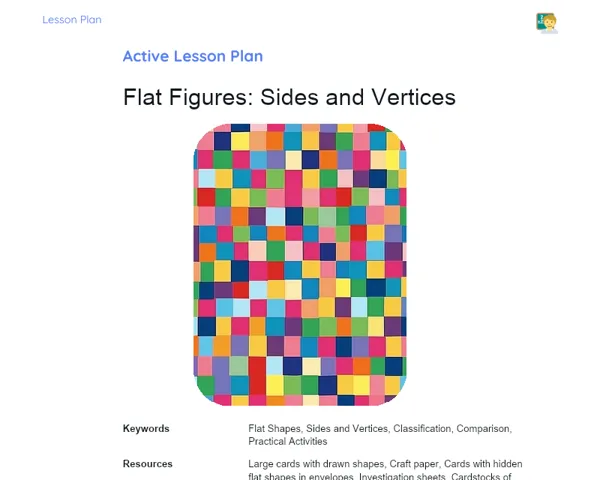Lesson Plan | Lesson Plan Iteratif Teachy | Metric Relationships in the Right Triangle
| Keywords | Right Triangle, Pythagorean Theorem, Metric Relationships, Digital Mathematics, Active Learning, Architectural Projects, Gamification, Digital Content, Problem Solving, Technological Tools, Collaboration, Creativity |
| Resources | Mobile devices or computers, Internet access, Design apps (SketchUp, Roomstyler), Educational gaming platforms (Kahoot, Quizizz), Video editing tools (Canva, others), Paper and pencil for drafting scripts, Projector or screen for presentations |
| Codes | - |
| Grade | 9th grade |
| Discipline | Mathematics |
Goal
Duration: (10 - 15 minutes)
The aim of this stage is to ensure that learners grasp the foundational concepts and skills needed for the lesson, setting the stage for an exploration of metric relationships in right triangles within a digital context. This phase also readies learners to engage with technological tools that will aid in applying the studied concepts.
Goal Utama:
1. Comprehend and apply the Pythagorean theorem in scenarios involving right triangles.
2. Identify and utilise the metric relationships between the legs (b), hypotenuse (a), and the leg's projection (m) onto the hypotenuse: am = b².
Goal Sekunder:
- Enhance problem-solving skills through practical and digital engagements.
- Integrate mathematical concepts with current digital tools and technologies.
Introduction
Duration: (10 - 15 minutes)
This stage's aim is to ensure that learners comprehend the essential concepts and skills necessary for the lesson, providing a solid base to delve into the metric relationships in right triangles in a digital context. It also prepares students to harness technological tools to apply the concepts explored.
Warming Up
✨ Begin the lesson on metric relationships in right triangles with a succinct overview of the topic. Emphasise the relevance of the Pythagorean theorem and the metric relationships involving the legs, hypotenuse, and their projections. Then, encourage students to grab their phones and find an intriguing fact or real-world application of the Pythagorean theorem. Invite them to share their discoveries with the class.
Initial Thoughts
1. 📚 Why is the Pythagorean theorem significant in mathematics and everyday life?
2. 🔍 Who was Pythagoras, and why is he a prominent figure?
3. ✏️ How would you describe the connections between the sides of a right triangle?
4. 🌍 Did your search uncover any practical applications of the Pythagorean theorem? What were they?
5. 🤔 In what ways can the metric relationships in right triangles be applied in other subjects or everyday situations?
Development
Duration: (60 - 75 minutes)
This phase provides students with the chance to apply mathematical concepts related to metric relationships in right triangles in a practical and relatable manner within the digital sphere. It aims to encourage collaboration, creativity, and active participation among learners through interactive and technological activities, preparing them to use mathematical knowledge in real-world scenarios.
Activity Suggestions
Activity Recommendations
Activity 1 - 🏡 Designing Your Dream Home with Pythagoras
> Duration: (60 - 70 minutes)
- Goal: Apply metric relationships in right triangles in a practical context, honing architectural projection skills and utilizing digital tools.
- Deskripsi Activity: In this activity, learners will map out an architectural plan for a specific room in a house, employing the Pythagorean theorem along with other metric relationships of the right triangle to ensure accurate dimensions. They will use online interior design and construction applications to create models and subsequently present their plans digitally.
- Instructions:
-
Split the learners into groups of up to 5.
-
Each group will select a specific room (e.g., living room, bedroom, kitchen) to design using metric relationships.
-
They should make use of apps like SketchUp or Roomstyler, or others recommended by the teacher to create their architectural plans.
-
They must apply the Pythagorean theorem to determine wall lengths and other measurements in the room.
-
Prepare a digital presentation detailing how they used the metric relationships and highlighting the primary measurements calculated.
-
Each group will showcase their architectural plan to the class, demonstrating their use of metric relationships.
Activity 2 - 🎮 Adventure Game: Unraveling the Right Triangle
> Duration: (60 - 70 minutes)
- Goal: Encourage the learning of metric relationships in right triangles through a playful, cooperative, and applied approach, making use of educational gaming platforms.
- Deskripsi Activity: Students will engage in a gamified activity where they will employ their grasp of metric relationships to tackle challenges in an educational adventure game. This can be set up on platforms like Kahoot or Quizizz, with each level reflecting a mathematical problem that must be solved to progress.
- Instructions:
-
Organise the students into groups of up to 5.
-
The teacher should prepare an adventure game in advance on Kahoot or Quizizz, integrating problems that involve the Pythagorean theorem and the metric relationships of the right triangle.
-
Each group will access the game on their mobile devices or computers.
-
Students will collaboratively solve the assigned problems to move through the game levels.
-
At game's end, groups should share their solutions and discuss how they applied the metric relationships of the right triangle.
-
Groups will present their reflections to the class, discussing methodologies and challenges faced.
Activity 3 - 📸 Mathematical Digital Influencers
> Duration: (60 - 70 minutes)
- Goal: Cultivate communication skills and the ability to convey mathematical concepts creatively by using digital platforms to produce engaging educational content.
- Deskripsi Activity: Learners will create social media content simulating the role of digital influencers in mathematics. They will explain the metric relationships in the right triangle in a fun and engaging manner, developing short video lessons or posts with graphics and diagrams.
- Instructions:
-
Organise the students into groups of up to 5.
-
Each group will choose a digital content format: short videos for TikTok or Instagram Reels or design posts with infographics and diagrams.
-
Students should outline a script or plan for their content, highlighting the metric relationships of the right triangle.
-
Utilise video editing tools or graphic applications, like Canva, to develop the content.
-
Groups are to record or create their posts, ensuring their explanations are clear and visually appealing.
-
Present the finished content to the class, simulating a social media post.
-
Each group will receive feedback from classmates and the teacher regarding clarity and creativity.
Feedback
Duration: (10 - 15 minutes)
This stage consolidates learning, allowing students to reflect on their experiences, share knowledge gained, and receive constructive feedback. This moment encourages metacognition, collaboration, and continuous improvement of students' skills, while deepening their understanding of the mathematical concepts covered in the lesson.
Group Discussion
💬 Group Discussion: Facilitate a discussion where each group shares their insights from the activities and their key takeaways. Follow this structured approach:
- Arrange students in a circle to make participation easier for everyone.
- Ask each group to present their activities and main learnings briefly.
- Invite students to ask questions about the projects that were presented.
- Highlight intriguing points from the presentations and link them to relevant mathematical concepts.
- Inquire if anyone faced challenges and how they overcame them.
Reflections
1. 📝 Reflection Questions:
- How were the metric relationships in right triangles applied throughout the activities? 2. 2. What was the most significant challenge your group encountered during the activities and how did you resolve it? 3. 3. How did the use of digital tools enhance the understanding of mathematical concepts?
Feedback 360º
🔄 360° Feedback: Conduct a 360° feedback round where each student receives feedback from their group peers. Guide the class to ensure that feedback is constructive and respectful. Follow this outline:
- Each student expresses something positive about their peers' work.
- They should then suggest improvements, always in a constructive manner.
- End the feedback session with an encouraging comment or compliment.
Conclusion
Duration: (10 - 15 minutes)
🔍 Purpose: This stage aims to consolidate the learning experience, underscoring the significance of the concepts explored and their real-world applicability. It seeks to connect the studied content with modern technological dynamics, inspiring students to view mathematics as a powerful tool in their lives. It’s a time for reflection on the knowledge gained, fostering a deeper and more enduring understanding.
Summary
🎉 Fun Summary: Imagine turning mathematics into an epic adventure! Today, we navigated the exciting realm of right triangles, discovering how Pythagoras and his metric relationships serve as invaluable tools. Whether we were calculating the hypotenuse or designing our dream homes, we explored how formulas shape the world around us. Students transformed into architects, gamers, and digital influencers, showcasing that mathematics transcends mere numbers - it's the gateway to new possibilities!
World
🌍 In Today's World: In a realm where technology and creativity intertwine, grasping the metric relationships in right triangles enables us to innovate, create, and solve problems in astonishing ways. From designing apps to constructing virtual spaces, mathematics is fundamentally intertwined with the digital tools we rely on daily, presenting numerous opportunities in our ever-evolving landscape.
Applications
🚀 Applications: The metric relationships of the right triangle are crucial not just in mathematics, but across fields such as architecture, engineering, game design, and graphic design. These concepts empower us to measure distances, create secure structures, and devise precise solutions to real-world challenges, highlighting the importance of these principles in daily life and in various careers.



